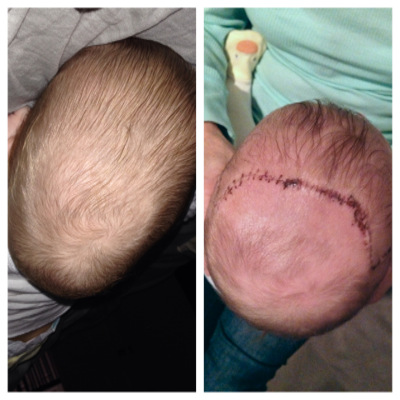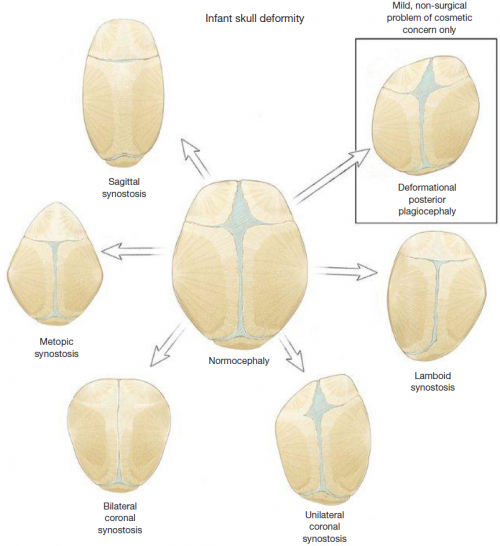Craniosynostosis consists of premature fusion of 1 or more cranial sutures, often resulting in an abnormal head shape. It may result from a primary defect of ossification (primary craniosynostosis) or, more commonly, from a failure of brain growth (secondary craniosynostosis). Simple craniosynostosis is a term used when only 1 suture fuses prematurely. Complex or compound craniosynostosis is used to describe premature fusion of multiple sutures. When children with craniosynostosis, usually complex, also display other body deformities, this is termed syndromic craniosynostosis.
Premature suture closure leads to characteristic changes in the shape of the skull, which relate not only to the reduced growth at the fused suture but also to the compensatory growth at adjacent open sutures. The resultant deformity is often observable in the neonatal period, but milder forms may not be immediately apparent. Most cases of craniosynostosis involve a single suture, occur sporadically without a prior family history of craniosynostosis, and are not associated with other physical abnormalities (ie, are nonsyndromic).
Treatment is indicated when there is increased pressure on brain or for cosmetic reasons. management of craniosynostosis ranges from watchful waiting to complex surgeries to remodel the skull shape.


